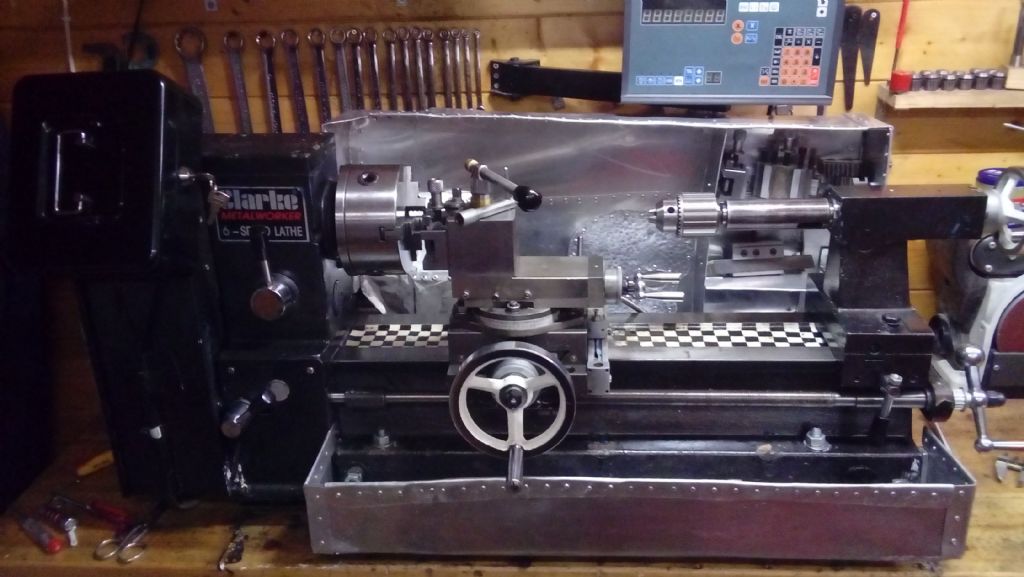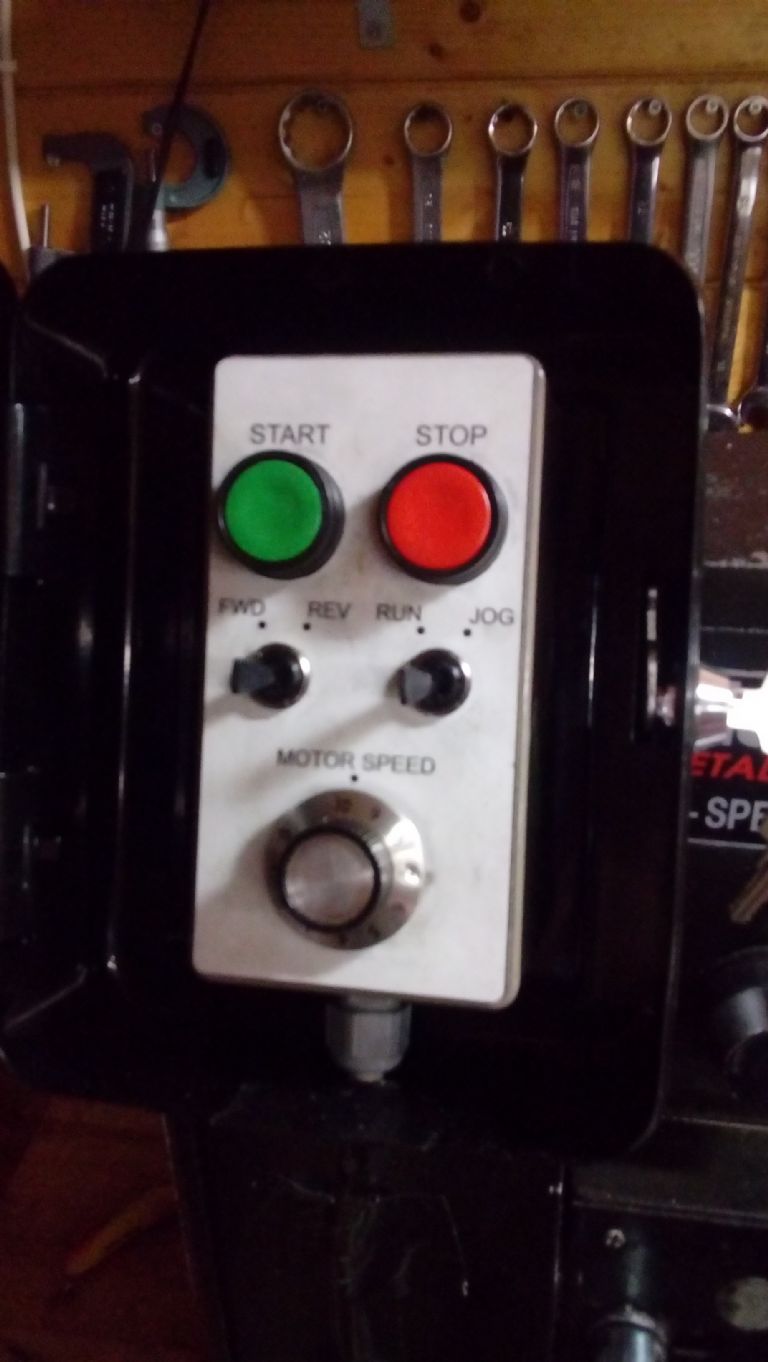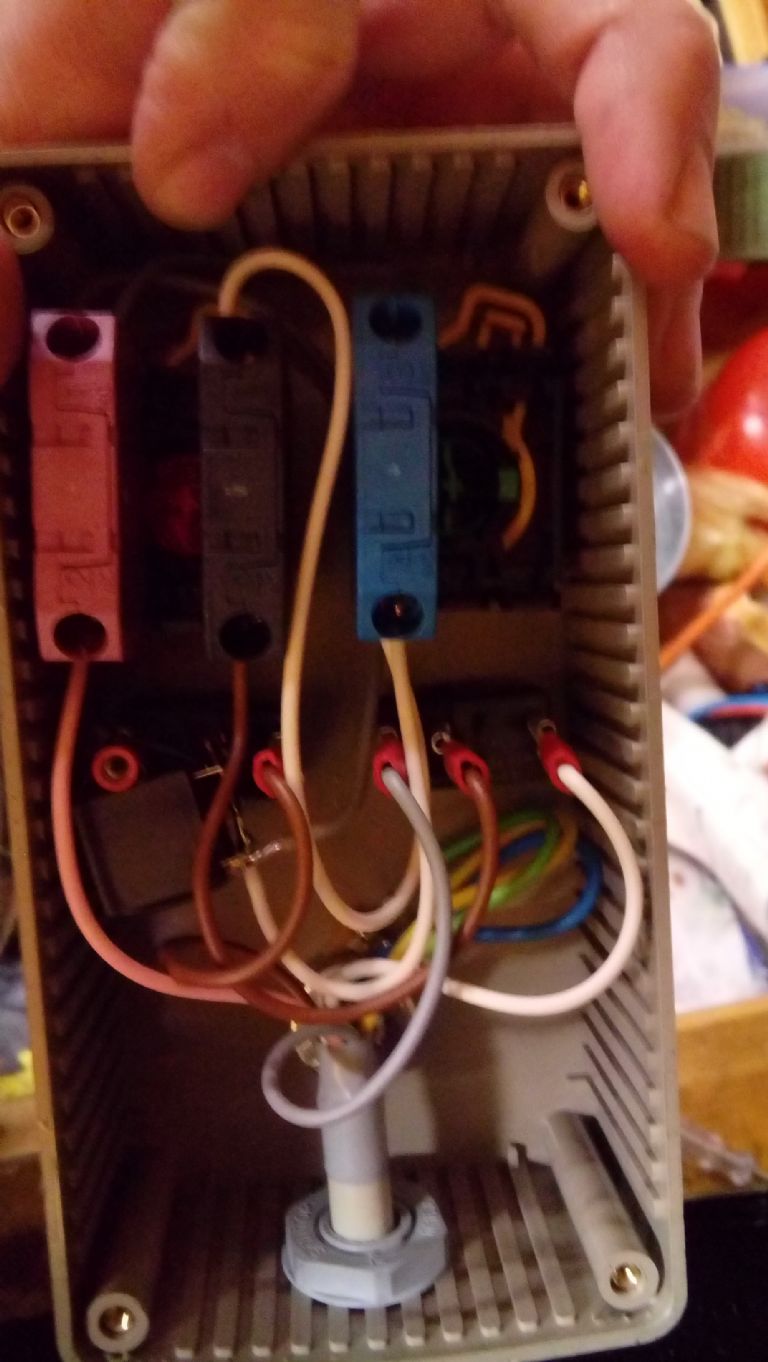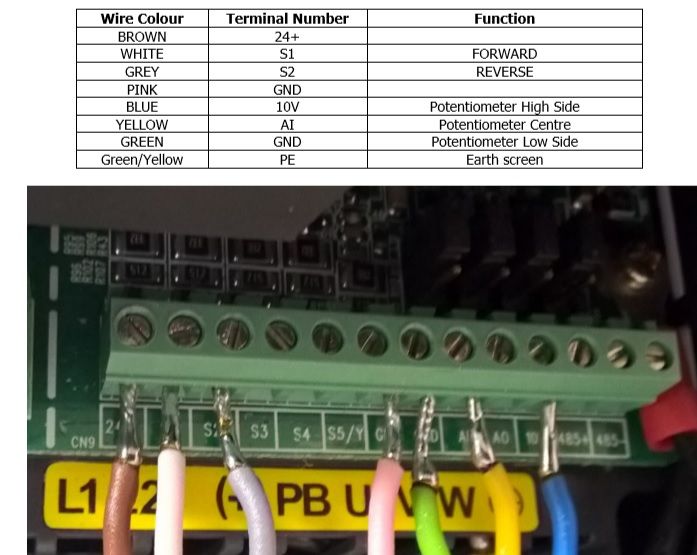The original posts regarding the starting and stopping of an electric motor on machinery – the machine will need the following :
1. A disconnection device which will default to OFF should the power fail and,
2. An overload detection device to switch off the motor in case of overloading,
The terms used in the previous posts should be understood as follows :
DOL :
The terms DOL ( Direct On Line ) refers to a device which starts the motor directly from the supply – i.e. no other device controlling the motor current.
NVR :
No Volt Release refers to the function whereupon the starting device will automatically drop out should the power supply fail and will remain off until the start control is re-actuated.
Normally, the disconnection device relies on an electromagnet to hold in a ( or several ) switch contact(s). The electromagnet is powered from the supply via a Start push button and is held in by a closing contact of the device together with a Stop push button.
These devices may be found at a number of our suppliers, I personally have used some devices from Axminster ( just because they are the most conveniently located supplier – no other reasoning ) which incorporate the Start and Stop push buttons as well as the NVR. Regarding overload protection, a correctly rated fuse is the absolute minimum requirement although various other specialist motor overload devices are also available.
Make sure that you do a risk assessment ( sorry – had to mention that ). You should consider the following and, in addition, any other pertinent points :
1. Conveniently located start and stop button ?
2. Once started, does the motor turn off AND STAY OFF if the supply is switched off and then on again ( NVR ) ?
3. Do you require any additional Stop devices such as guard safety limit switches of extra Stop buttons ( must be normally closed contacts in series with the Stop push button?
4. Have you incorporated an overload device which will shut down the NVR when it trips ?
OK, sorry about that, on to the inverter controlled motor – Lets be clear about the meaning of an Emergency Stop. Emergency Stops must safely remove energy from driven devices. With inverters, there are several ways to do this :
1. A disconnection device between the power source and the inverter,
2. A disconnection device between the inverter and the motor,
3. An inverter with built in safety outputs,
Considering each option :
1. A disconnection device ( NVR ) between the supply and the inverter is generally considered to be the safe option, but, the inverter will retain some charge at power down allowing the motor to continue running for a short time. Your risk assessment will tell you whether this is acceptable – industrially this method is going out of favour,
2. A disconnection device between the inverter and the motor potentially has the capability to remove the load from the inverter whilst running at 'full whack' causing a catastrophic failure of the inverter. This is obviously not good although some inverters are capable of withstanding this and others may or may not have a special input to feed back the status of the disconnect device to shut down the inverter when the NVR switches off,
3. Inverters with safety outputs are becoming increasingly the way to go. They incorporate two dedicated inputs whose job it is to shut down the outputs of the inverters in a guaranteed safe manner. Inverters incorporating these safe outputs need to be specifically selected,
So, the difference between Stop and Emergency Stop is that Emergency Stop must remove power from the motor in an approved safe fashion – again ( sorry ) your risk assessment should ask the question "When is Stop safe enough ?". If you are putting your hands into a lathe, maybe holding a chuck key, do you want to rely on the inverter to stop the rotation of the chuck ?
Just bear in mind that all modern inverters rely upon software to drive the motor – the basic principle of safe design is that software can fail and Murphy's Law says that it will always fail in the most un-safe way possible.
Bob
Edited By Bob Jepp on 01/04/2017 22:56:02
 Neil Wyatt.
Neil Wyatt.









